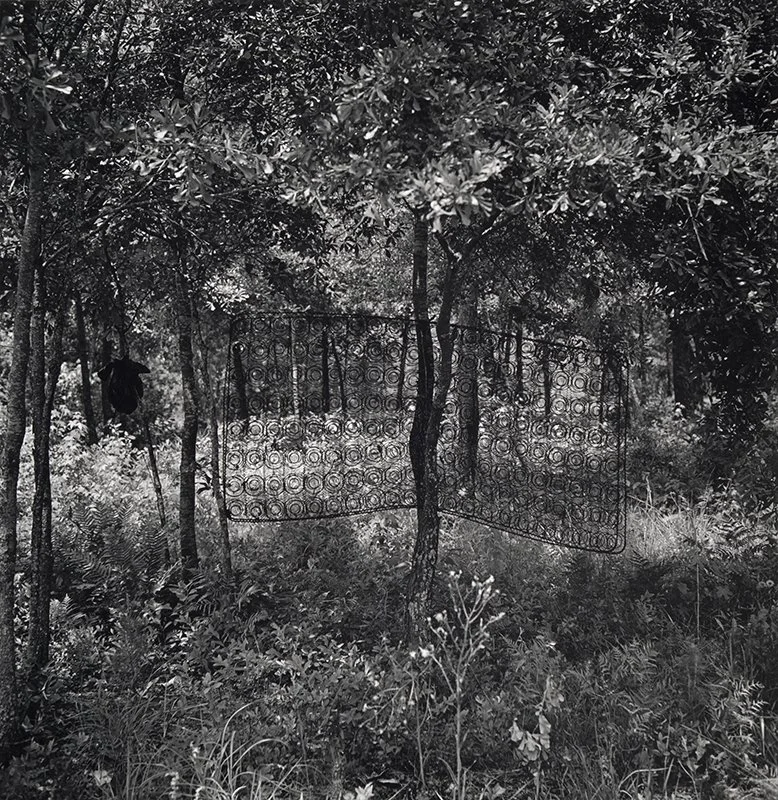Exhibition Review: Dawoud Bey & Carrie Mae Weems: In Dialogue
The Birmingham Project: Wallace Simmons and Eric Allums, 2012. Archival pigment prints mounted to dibond, 40 x 64 inches (two separate 40 x 32 inch photographs). © Dawoud Bey. Courtesy of Stephen Daiter Gallery.
Written by Michelle O'Malley
Edited by Sophie Yates
Dawoud Bey and Carrie Mae Weems’ In Dialogue brings the overlooked to center stage through photography that challenges viewers’ perspectives and encourages empathy. Similarly to how the media rarely focused on issues of race in the 1970s, the concept of photography as an art form was also less mainstream.
Both born in 1953 in predominantly black urban neighborhoods, Bey and Weems took their overlooked status to heart and expressed their relatable human moments with photography, in the hopes of bolstering change. The two met at the Studio Museum in Harlem and bonded over their passion for photography, videography, and their acute awareness of the inequality around them. Considered intellectual colleagues, Bey and Weems brought their ideas to life in the last 40 years, their work displayed in Grand Rapids Museum curator Ron Platt’s exhibition, In Dialogue.
The exhibition has five different sections: Early Work, Broadening the Scope, Resurrecting Black Histories, Memorial and Requiem, and Revelations in the Landscape. By purposefully pairing the works of Bey and Weems from similar time periods in their careers, Platt successfully weaves a beautiful, thought-provoking story between the two artists, with attention to the same issues: race, class, representation, and gentrification within communities over time.
The Woman in the Light, Harlem, NY, 1980. Gelatin silver print, 20 x 24 inches. © Dawoud Bey. Courtesy of Stephen Daiter Gallery.
The Early Work section features Bey and Weems’ 35mm photographs from their early careers and captures candid moments of city life. Bey’s The Woman in the Light depicts a Black woman in a Harlem apartment holding up her hands as sunlight pours through.
In Broadening the Scope, Weems’ iconic Kitchen Table Series captures the domestic narrative of families in the 1970s. A black-and-white photo of Weems performing the role of an African American mother sitting at her kitchen table with her children, cards and books strewn on the table, showcases the integrality of kitchen tables for humans, as a way of bringing us together in community.
Untitled (Woman and Daughter with Children) from The Kitchen Table Series, 1990. Gelatin silver print, 27 ¼ x 27 1/4. © Carrie Mae Weems. Courtesy of the artist and Jack Shainman Gallery, New York.
In Resurrecting Histories, Bey and Weems explore their black historical roots, inviting viewers to look through another person’s eyes to better understand them. Weems’ Sea Island Series is a black-and-white photography relevant to Black history, a box-spring hung across two trees in the forests of South Carolina where the African American Gullah culture originated.
Untitled (Box Spring in Tree), from the series Sea Islands, 1992. Gelatin silver print, 20 ¾ x 20 ¾ inches. © Carrie Mae Weems. Courtesy of the artist and Jack Shainman Gallery, New York.
Requiem and Mourning emphasizes the painful nature of emotions after a tragic event. Bey’s Birmingham Project features a black-and-white photograph of a young man and a man 50 years older, in reference to the bombing of a Baptist church by the KKK in 1963. The younger man photographed was the same age as someone who died in the bombing. The older man is meant to represent the tragic truth of “what could have been.”
Former Renaissance Ballroom Site, Harlem, NY, from the series Harlem Redux, 2016. Archival pigment print, 40 x 48 inches. © Dawoud Bey. Courtesy of Stephen Daiter Gallery.
Revelations in the Landscape underscores the universal moment of acknowledging “how far we’ve come” when comparing the past and present. Bey’s Former Renaissance Ballroom is a photograph wherein the camera is focused from behind a piece of construction plywood, where the reconstruction of the historically black urban Harlem neighborhood is within view. Again, Bey invites onlookers to immerse themselves within his photograph so that they can personally experience the effects of gentrification.
Recognition of change refers back to the exhibit’s overall theme, that in order to truly thrive as a society, we must place ourselves in different perspectives, allowing ourselves to feel the pain from past traumas and grow into a more cohesive society overall. Dawoud Bey and Carrie Mae Weems will be having a conversation at the Grand Rapids Art Museum March 24.
Photo Editor: Lucia Luzzani












